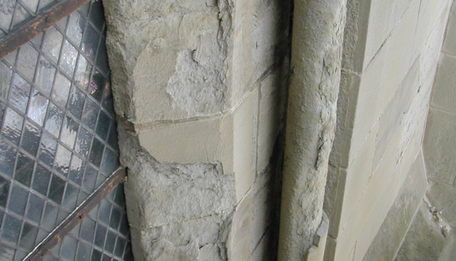
Many sedimentary stones contain clay that swells when it gets wet. The differential strain between wet and dry regions can result in deformation, stress, and cracking. The photo above shows the condition of the Cathedral of Lausanne, Switzerland, which is thought to be suffering from stress from clay in the sandstone. We are studying the mechanism of swelling and developing methods of treatment to prevent the damage. Our results to date are summarized in several publications.
We have been exploring the use of a class of surfactants called diaminoalkanes for reducing the swelling of the clays. This method was first suggested by Wendler and Snethlage ["Surfactants and adherent silicon resins - New protective agents for natural stone", pp. 193-200 in Mat. Res. Soc. Symp. Proc. Vol. 185 (Mater. Res. Soc., Pittsburgh, PA, 1991) ]. We have studied the influence of the size of the molecules on their effectiveness in preventing swelling, as well as their impact on the mechanical properties of the stone, and the performance of consolidants in restoring their strength.
This problem was the subject of doctoral thesis research by Inma Jiménéz and Tim Wangler. Their work is described in a series of papers.